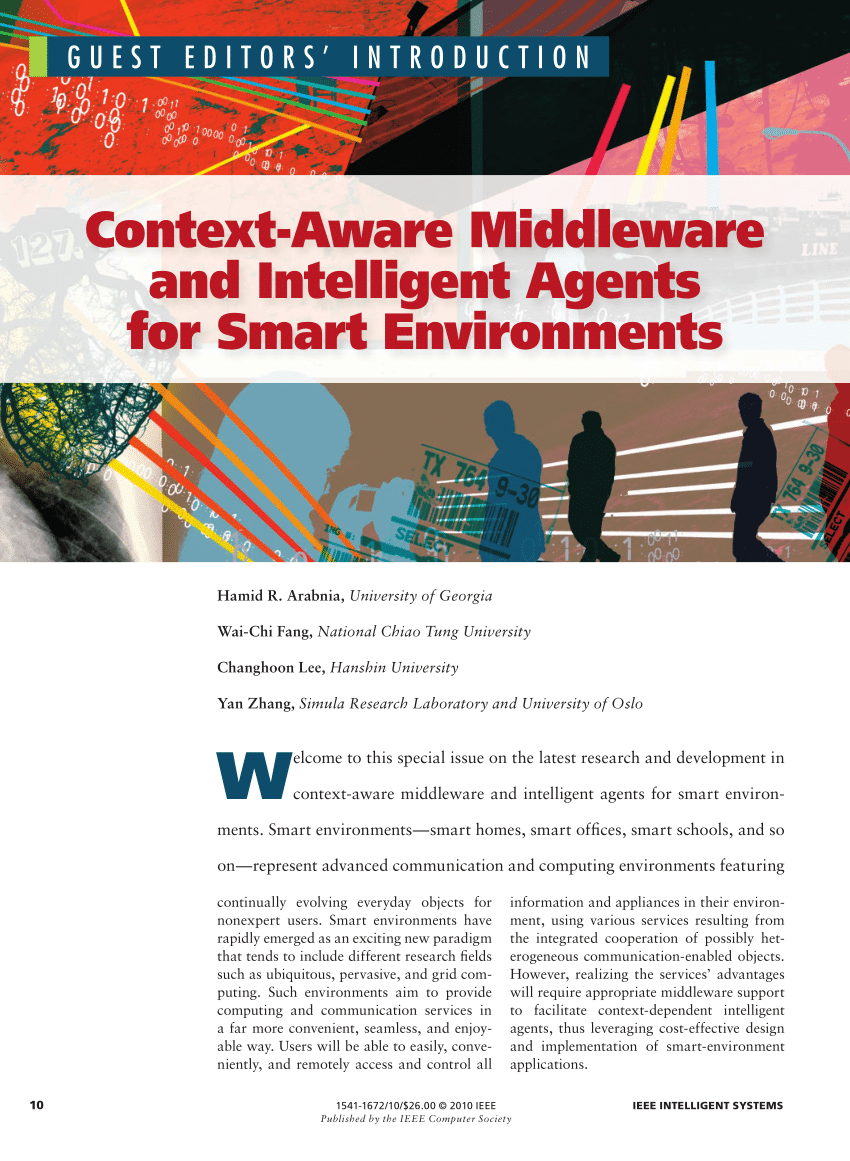Intelligent agents are transforming our interaction with technology, becoming essential in both personal and business realms. These AI-powered entities perceive their environment, make decisions, and act autonomously. But what makes an intelligent agent truly effective?
Several key principles lie at the core of intelligent agent design. Context-awareness is crucial; agents must understand their environment’s nuances to respond appropriately. Learning over time is equally vital, allowing agents to improve through experience. Proactivity sets superior agents apart, anticipating needs rather than merely reacting to commands.
Consider a smart home assistant that not only controls your lights but also learns your routines, adjusting the temperature before you arrive home from work. Or imagine a business AI that proactively identifies market trends and suggests strategic moves. These scenarios illustrate the power of well-designed intelligent agents.
As the demand for sophisticated AI solutions grows, platforms like SmythOS are enhancing agent capabilities. SmythOS offers a visual workflow builder, empowering even non-technical users to create complex AI agents. Its support for multiple AI models allows the development of versatile agents suited to a wide range of tasks.
The future of AI lies in intelligent agents that seamlessly integrate into our lives and work, augmenting human capabilities rather than replacing them. As we refine the principles of intelligent agent design, we open doors to innovations that were once the realm of science fiction. The journey towards more intuitive, helpful, and powerful AI agents is just beginning, promising to transform how we live and work profoundly.
Understanding Context in Intelligent Agents

Imagine you’re talking to a friend. You know their preferences, your location, and the time. This helps you communicate effectively. Intelligent agents use context similarly.
Context involves understanding the situation. For smart agents, this means knowing:
- The time
- The location
- The user’s needs or wants
With this information, agents can make smarter decisions. It’s like suggesting ice cream on a hot day but not in winter. Context helps agents act appropriately for each situation.
Why is this important? Agents that understand context can:
- Provide better answers
- Solve problems faster
- Make users happier
For example, a smart home agent might turn on the lights at dusk without being asked. Or a virtual assistant could remind you to bring an umbrella if rain is forecasted for your destination.
Think about your daily technology use. Now imagine it understanding your needs based on the surrounding context. That’s the power of context-aware agents.
As these agents become smarter, they’ll assist us in more ways. They’ll know when we need help before we ask and provide the right information at the right time. It’s an exciting advancement in making technology more user-friendly.
Adaptive Learning and Improvement: The Key to Smarter AI Agents
Imagine an AI agent that gets better with every interaction, learning from its successes and mistakes just like a human would. This isn’t science fiction – it’s the reality of adaptive learning in intelligent systems. And it’s changing the game for businesses looking to harness the power of AI. Adaptive learning allows AI agents to evolve and improve over time, turning every interaction into a learning opportunity. Whether engaging with humans or other systems, these agents continuously refine their capabilities, becoming more effective and efficient with each task they complete. But how does this work in practice? Let’s break it down:
The Continuous Learning Cycle
Think of an AI agent as a digital employee that’s always eager to learn. With each interaction, it gathers new data, analyzes outcomes, and adjusts its approach. For example, a customer service bot might start with basic responses, but over time, it learns to handle more complex queries, pick up on emotional cues, and even anticipate customer needs before they’re expressed. This continuous improvement cycle is crucial for businesses aiming to stay competitive. As Dr. Fei-Fei Li, Co-Director of Stanford’s Human-Centered AI Institute, puts it: “AI is not just a technology, it’s a powerful tool that can help us solve some of the world’s biggest challenges. But to do that, it needs to keep learning and adapting.”
SmythOS: Empowering Adaptive AI Agents
SmythOS takes adaptive learning to the next level by supporting a diverse range of AI models. This flexibility allows businesses to choose the right tools for their specific needs, ensuring that their AI agents are always learning in the most effective way possible. By integrating multiple AI models, SmythOS creates a rich learning environment where agents can:
- Tackle complex problems using a variety of approaches
- Adapt to new data and scenarios quickly
- Learn from both human and system interactions
- Continuously improve their performance over time
This multi-model approach is particularly powerful because it mimics the way humans learn – by drawing on different types of intelligence and experiences to solve problems.
The Practical Advantages of Adaptive Learning
The benefits of adaptive learning extend far beyond simple efficiency gains. Consider these real-world applications:
- Financial institutions use adaptive AI to detect fraud patterns that are constantly evolving
- E-commerce platforms employ learning agents to personalize recommendations with increasing accuracy
- Healthcare providers utilize adaptive systems to stay updated on the latest medical research and treatment options
These examples showcase how adaptive learning can lead to tangible improvements in various industries. As AI expert Andrew Ng notes, “The ability of AI systems to learn and adapt is what makes them truly powerful tools for businesses.”
Adaptive learning in AI is not just about creating smarter machines; it’s about building systems that can grow and evolve alongside human needs and challenges. – Dr. Yoshua Bengio, AI researcher and Turing Award winner
Embracing the Future with SmythOS
As we look to the future, the importance of adaptive learning in AI cannot be overstated. SmythOS is at the forefront of this revolution, providing a platform where businesses can harness the full potential of adaptive AI agents. By supporting diverse AI models and fostering continuous learning, SmythOS empowers organizations to create AI solutions that don’t just work today, but continue to improve and adapt for tomorrow’s challenges. The journey of AI is one of constant growth and improvement. With adaptive learning and platforms like SmythOS, we’re not just creating intelligent agents – we’re nurturing digital colleagues that grow smarter and more capable with every interaction.
Proactive and Eloquent Interaction
Imagine a world where your digital assistant doesn’t just respond to commands but anticipates your needs before you even ask. Welcome to the realm of proactive intelligent agents. These AI-powered marvels are changing the game by staying one step ahead, making our lives easier in ways we might not have thought possible.
But what exactly makes an agent proactive? It’s all about foresight and initiative. These agents don’t sit idle, waiting for instructions. Instead, they’re constantly analyzing data, learning patterns, and making educated guesses about what you might need next. It’s like having a personal assistant who knows you so well, they can predict your requests before you make them.
Let’s paint a picture: You’re planning a trip, and before you even start searching for flights, your proactive agent has already compiled a list of potential destinations based on your past travel history, current weather conditions, and even your recent browsing activity. It’s not mind-reading; it’s smart, data-driven anticipation.
But anticipation is only half the battle. The true art lies in communication. After all, what good is a brilliant AI if it can’t effectively relay its insights? This is where the eloquent part of our intelligent agents comes into play. These agents are masters of choosing the right communication method for each unique situation.
Sometimes, a simple text notification is all you need. Other times, a voice prompt might be more appropriate, especially if you’re driving or your hands are full. In more complex scenarios, these agents might even communicate directly with other systems via APIs, seamlessly integrating with your digital ecosystem.
The key to effective AI communication isn’t just about what is said, but how it’s said and when it’s said.
Consider this: You’re in a meeting, and your proactive agent detects an important email has arrived. Instead of interrupting you with a loud notification, it silently updates your calendar with a reminder to check your inbox after the meeting. That’s the kind of nuanced, context-aware communication that sets truly intelligent agents apart.
Some platforms are pushing the boundaries of what’s possible in this realm. For instance, certain advanced AI systems enable agents to dynamically switch between communication methods based on user context and preference. This adaptability ensures that interactions remain smooth and intuitive, regardless of the situation.
As we look to the future, the potential for proactive and eloquent AI agents is boundless. From healthcare to education, from personal productivity to large-scale business operations, these intelligent assistants are poised to enhance how we interact with technology. The goal isn’t to replace human interaction, but to make our digital experiences more natural, efficient, and tailored to our individual needs.
One thing is clear: the most successful AI agents will be those that can not only anticipate our needs but also communicate their insights in ways that feel natural and unobtrusive. As users, we can look forward to a future where our digital assistants are not just tools, but intuitive partners in our daily lives.
Conclusion: Leveraging SmythOS for Intelligent Agents
The principles of intelligent agent design form the foundation of creating useful, reliable, and context-aware AI systems. These principles emphasize adaptive learning, proactive interaction, and robust decision-making capabilities. Intelligent agents must navigate complex environments, process vast amounts of data, and make decisions that align with their predefined goals.
SmythOS emerges as a valuable tool for technical architects and developers. Its visual workflow builder simplifies the creation of intelligent agents, allowing for intuitive design and rapid iteration. This tool enables teams to focus on the logic and functionality of their agents rather than complex coding structures.
Furthermore, SmythOS supports multiple AI models, providing the flexibility needed to tackle diverse challenges. Whether building a simple reflex agent or a sophisticated learning agent, the platform offers the necessary building blocks. This versatility ensures developers can create agents tailored to specific use cases, from customer service chatbots to complex decision-making systems in industrial applications.
The platform’s emphasis on context-awareness aligns with the core principles of intelligent agent design. By providing tools to integrate various data sources and sensors, SmythOS enables the creation of agents that truly understand their environment. This deep contextual understanding is crucial for agents to make informed decisions and provide valuable assistance to users.
Most importantly, SmythOS simplifies the process of implementing adaptive learning in intelligent agents. The platform’s built-in debugging tools and visual representation of agent decision-making processes allow developers to fine-tune their agents’ behavior over time. This iterative improvement is essential for creating agents that grow more effective and efficient with each interaction.
Looking to the future, the potential of intelligent agents to transform industries and enhance human capabilities is immense. By leveraging SmythOS, technical teams can lead this transformation, creating agents that are intelligent, useful, ethical, and aligned with human needs.
SmythOS bridges the gap between the theoretical principles of intelligent agent design and their practical implementation. It offers a robust, flexible, and user-friendly environment where the next generation of AI agents can be developed. As we push the boundaries of AI, platforms like SmythOS will be instrumental in turning visionary ideas into reality, empowering developers to create intelligent agents capable of tackling the complex challenges of our evolving world.
